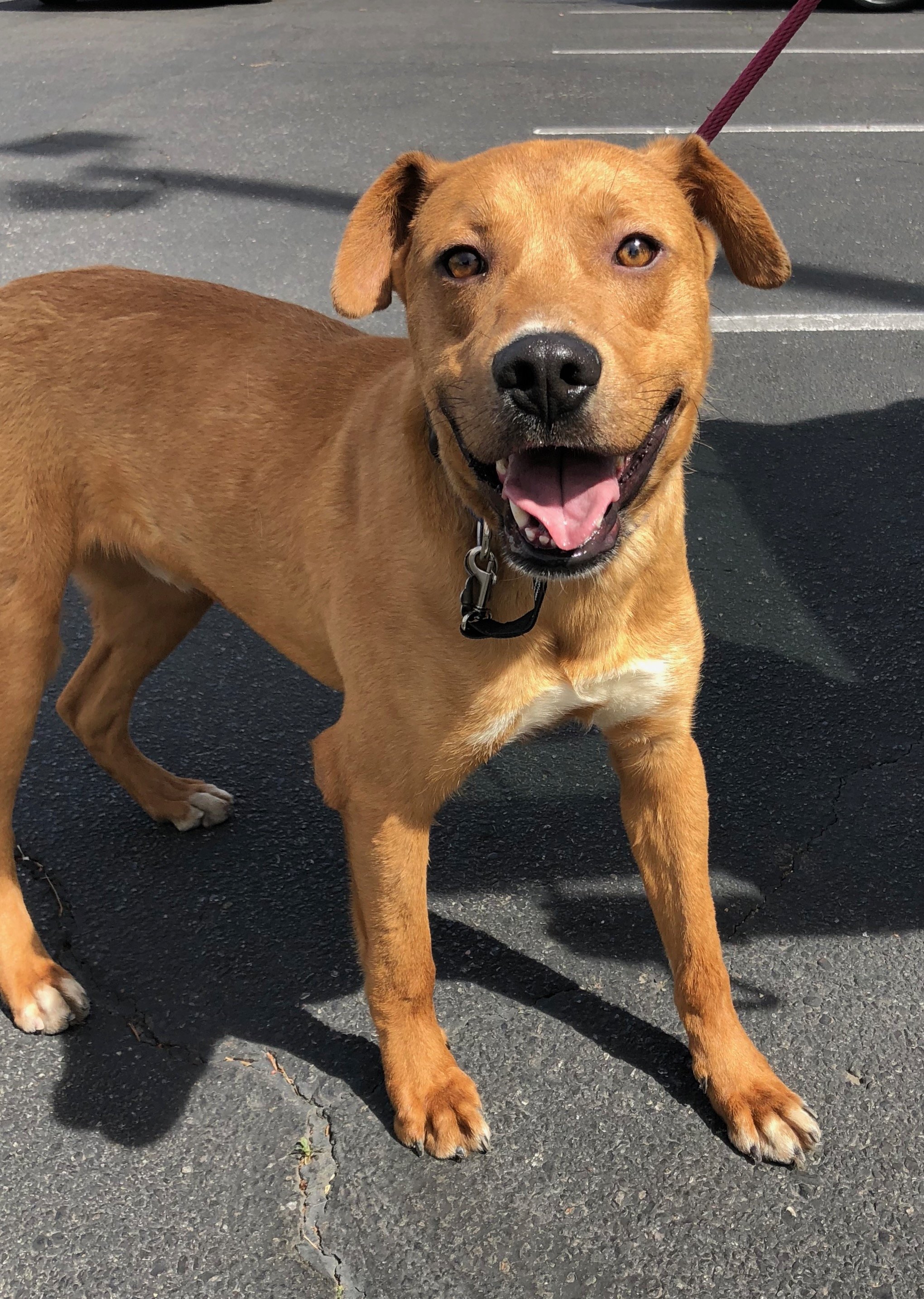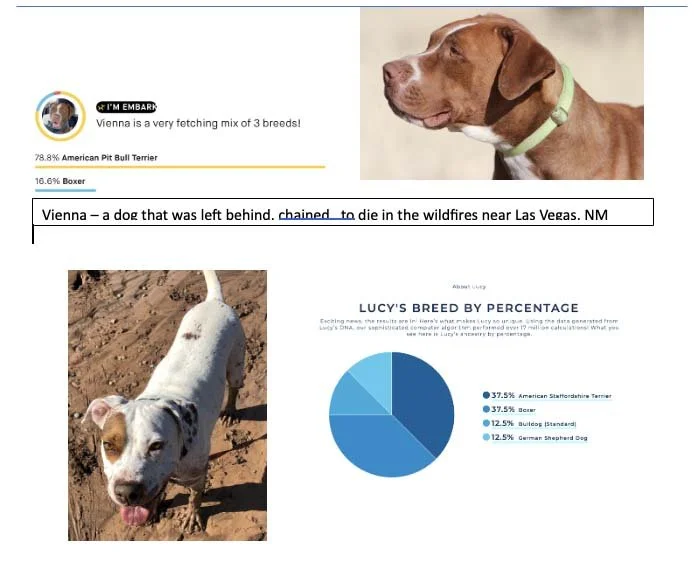New Mexico Dogs: The Real Deal
Why are New Mexico dogs some of the best dogs in the US? I get asked this question a lot. So I am going to answer the best I can. New Mexico dogs, and probably other dogs that live similarly to them, are naturally easy and well behaved. They have taught me about what stability, cooperation, leadership, and survival looks like. It is a standard we humans can only hope to achieve. Here are the qualities New Mexico dogs often have WITHOUT ANY TRAINING:
New Mexico Brown Dog at Valencia County Shelter, NM
They have an affinity for people without becoming overly attached or having separation anxiety.
They readily follow a routine or human’s guidance, assuming that guidance is given in a way the dog can understand.
They look to a human for guidance when walking on leash naturally.
They can survive for a long time in a shelter environment or other deprived environment without losing their minds.
They have a high bite threshold
They have not been treated with kindness in many cases, but are willing to give people another chance.
They are super easy to house train.
They are easy to walk on leash and train in general
Resource guarding behaviors are rare.
Their prey drive exists but is usually in the range an average adopter can manage it. If the dog has been hunting to live, this may be a different story around its former prey (cats, mice, rabbits)
Prosocial and they get along with other dogs.
They are usually free of genetic anxiety or fear. Even abused or feral dogs will start using their noses quickly.
They are generally quite healthy dogs, including their digestive tract. They can eat a variety of food and still remain free from digestive issues.
Why are these dogs behaving this cooperative and stable way? It’s certainly not because they have a life of luxury. A majority of dogs in the New Mexico shelters are brought in as strays. Other dogs are seized for cruelty. Only 10% of the stray dogs’ owners come to reclaim them. They may technically belong to people, but they are left to roam the neighborhood. Some owned dogs are let outside to relieve themselves while the owner is away at work. Other owned dogs are purely outside dogs with no or poor fencing to contain them. Other dogs grow up as street dogs or free-roaming, without a home. Maybe someone feeds them, but that person would not consider these dogs as belonging to them. Some dogs are completely feral. Regardless, the dogs roam the community and meet other dogs, mate, and create more dogs. This has been going on for quite some time, likely a couple hundred years, in New Mexico.
New Mexico has 23 Native American tribes that reside inside its borders and make up roughly ten percent of the state’s population. Part of the Navajo Nation is in New Mexico. It is estimated that 250,000 dogs live on the Navajo reservation. These dogs are nicknamed “Rez Dogs” and are truly some of the best dogs you will ever meet. However, overpopulation is a problem on many of the reservations, with dogs in similar or worse conditions than the dogs that are in the towns.
I have done DNA tests on several of the dogs at the shelter whose breed makeup was a mystery. One is my previously feral dog, Tipton. He consists of 19 breeds. This large variety of breeds is common in the New Mexico dogs that are street, Rez, or uncontained dogs. There is such a wide variety of breeds without one group being predominant that the dog is well rounded and balanced without one set of instincts overriding the other. We avoid the typical issues specific breeds have by mixing them to this extent for at least 150 years. If any group takes precedence, it is usually the herding group. These dogs are often referred to as “New Mexico Brown or Black Dogs.”
Another group that is represented in our shelter population is bully type dogs. These are the blocky head types and they are less common as free roaming dogs than the “New Mexico Black or Brown Dog, although they can be seen roaming the streets. These dogs usually have some Pit Bull, American Staffordshire Terrier, American Bulldog, Bully, and Boxer in them, although sometimes they contain very little of these breeds and just carry the appearance. These dogs are also usually carry many of the qualities of the free roaming dogs. My guess is these dogs are more prone to backyard breeding, either purposely or accidentally. It is a common practice in New Mexico to have a small dog as an “inside dog” and a larger bully type dog that is kept as an “outside dog”. Chaining is not legal in most of New Mexico but it is still practiced. Many people that cannot or will not fence their property with a quality fence opt to chain their dog to keep it from running away. But then the free roaming dogs can taunt or attack the chained dog. Many bully type dogs suffer this fate, but others are owned as something to flaunt, a status symbol, or add to the tough image of the owner. When the dog becomes unruly or difficult, it will be abandoned in some fashion.
Another animal welfare problem in New Mexico is hoarding. This creates dogs that live together in cramped conditions and create more dogs. These dogs can be the genetic makeup of the rest of New Mexico dogs, although “breeders” are often guilty of hoarding large quantities of one breed and neglecting the dogs’ care. These dogs will then end up in the shelter system if the breeder gets busted or some of their dogs escape the property. With the hoarding cases I have assisted with, one being a Doberman breeder, the dogs are still quite solid in temperament.
I think natural selection plays a large part in the character of the New Mexican dog. Dogs are free to choose who they will mate with in many respects. Humans do not choose mates wisely for their dog breeding programs. Many breeds have been destroyed, the German Shepherd Dog and the English Bulldog being two examples, by humans making dogs look a way that pleases us. We think nothing about what it would take to have the dog’s offspring survive in the wild when we choose mates for dogs. However, the street dog would consider this and choose accordingly. If your puppies are too fearful or too anxious, they would not be able to find food. If they are too bold and don’t assess danger properly, they will be killed by various predators or cars. If the pups are not pro-social with other dogs, they likely would not survive either. If they cannot hunt by being focused, but not hyper, they would scare away the prey. If they acted like out-of-control crazy agility dogs on the course, they would scare away prey, starve to death, or be killed by other dogs. Many of these dogs cooperate with humans in some way. If they were aggressive to the nice elderly lady that put food out for them, they would be shot, or at the very least she would not feed them.
I think the other factor in the amazing New Mexico dog temperament is the human population’s intolerance for aggression. It is still a bit of the Wild West here. There is a huge amount of land without a lot of resources. People have to be reasonably practical. People will not tolerate a dog that will put their family in danger like they will in other areas of the U.S. Aggression earns a bullet or a dog being surrendered to the pound. Therefor those dogs do not breed. I imagine this has been selected for by humans for quite some time. Combine that with the along with the natural selection the dogs are performing, and that produces some pretty awesome dogs.
In the big cities people are paying thousands of dollars for a mixed breed dog with huge temperament faults. A “its how they are raised” mentality is keeping dangerous dogs alive because shelters will not so their job and cull dangerous dogs. So then rescues adopt them out to unsuspecting families. Those families are sometimes told by trainers and rescues it is their fault the dog is misbehaving. Dog trainer ego (both in males and females) may cause dog owners to spend thousands of dollars to keep an aggressive dog in their home under the false promise that an aggressive dog can be “fixed”. This causes a risk for the community and the children in that home because temperament is innate. Behavior can be modified, but under the right conditions, poor temperament will rear its ugly head and people get hurt.
The doodle craze is something I simply do not understand. Doodles’ temperaments are about the furthest a dog can get from a New Mexico dog. Doodles would die on the streets here. They have few survival instincts and don’t act much like dogs. Many have genetic aggression, resource guarding, anxiety, pushiness, health and digestion issues, and fear-based problems. Yet these dogs are being bought for thousands of dollars. So many people now think dogs are supposed to behave like the tempementally unsound, anxious, pushy, fearful, insecure dog that are all too common in many households.
The people that have aggressive dogs or buy an over-priced designer dog don’t know what they are missing, while thousands of New Mexico dogs die every year in shelters. Many trainers, especially newer trainers, will never have the pleasure of knowing what dogs truly arde supposed to be. This is sad because it colors their view of what a normal dog is. It affects what the population at a whole expects dogs to act like, It’s dumbing down our canine genetic pool plus our human knowledge and expectations of dogs in general. This process is increasing our tolerance for aggressive dogs, which is leading to what I suspect is an increase in more households living with aggressive dogs.
The real dog is disappearing. It is being replaced by things that look like dogs (sort of), but don’t act like the sentient beings that helped humans survive for thousands of years. To know the devoted cooperation that true dogs give people is a privilege I am lucky to have. It was pure coincidence that I moved to New Mexico. I didn’t move here knowing what the dogs were like or what I would find here. I found a really sad state of animal welfare. But in the middle of that lies a gem in the New Mexico dog. The experience of knowing the essence of the dog is an experience I hope everyone gets just once in their lifetime.




